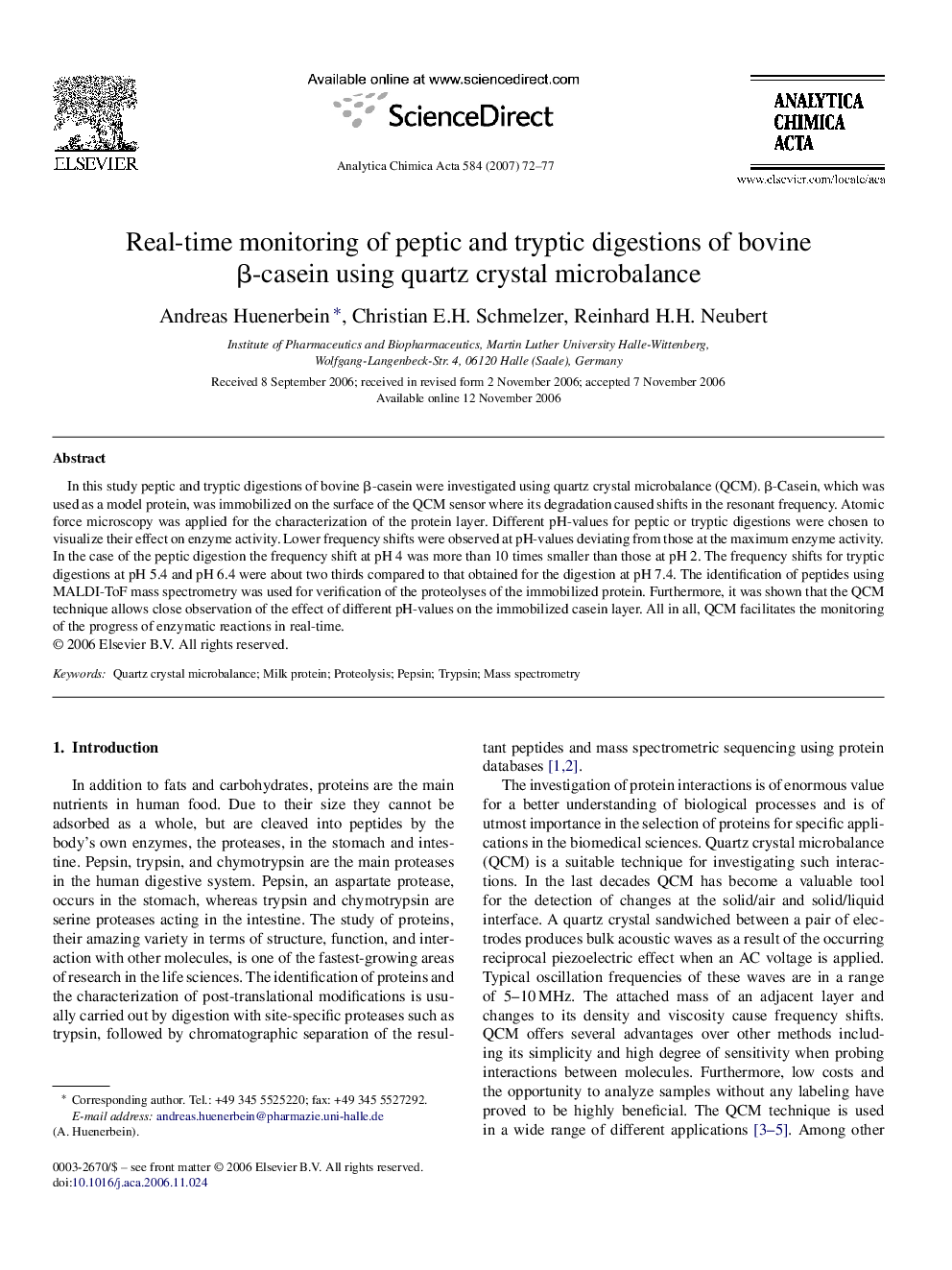| Article ID | Journal | Published Year | Pages | File Type |
|---|---|---|---|---|
| 1171251 | Analytica Chimica Acta | 2007 | 6 Pages |
In this study peptic and tryptic digestions of bovine β-casein were investigated using quartz crystal microbalance (QCM). β-Casein, which was used as a model protein, was immobilized on the surface of the QCM sensor where its degradation caused shifts in the resonant frequency. Atomic force microscopy was applied for the characterization of the protein layer. Different pH-values for peptic or tryptic digestions were chosen to visualize their effect on enzyme activity. Lower frequency shifts were observed at pH-values deviating from those at the maximum enzyme activity. In the case of the peptic digestion the frequency shift at pH 4 was more than 10 times smaller than those at pH 2. The frequency shifts for tryptic digestions at pH 5.4 and pH 6.4 were about two thirds compared to that obtained for the digestion at pH 7.4. The identification of peptides using MALDI-ToF mass spectrometry was used for verification of the proteolyses of the immobilized protein. Furthermore, it was shown that the QCM technique allows close observation of the effect of different pH-values on the immobilized casein layer. All in all, QCM facilitates the monitoring of the progress of enzymatic reactions in real-time.
